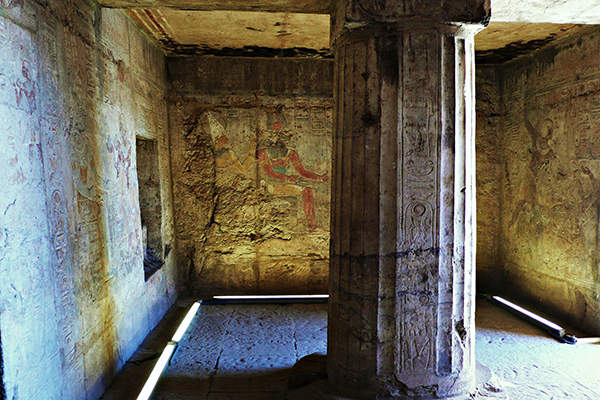Redemption, resurrection, renewal, promise and freedom are themes of our current season. Over the ages, countless traditions have marked the springtime miracle of life bursting forth from seemingly cold, dead earth.
I’m thinking of three traditions in particular, two of which are probably obvious to those of us in the West, Passover and Easter. This year, the week of Passover overlaps Christian Holy Week, the period between Jesus’ entry into Jerusalem on Palm Sunday and his resurrection on Easter Sunday. To add a hint of scandal, I’m also thinking of the ecstatic Dionysian Mysteries of ancient Greece. All three involve breaking free of physical and spiritual bondage of some sort and emerging as a more complete, connected and authentic individual, community member and earthling.
Passover celebrates the liberation of the Israelites from slavery in Egypt, led by the divinely chosen but less-than-willing Moses. They are reborn as a nation and set on a path by the Lord to the Promised Land. The physical redemption of the Israelites is honored during the 7-day holiday and it is also a time of spiritual redemption. Along with house cleaning of the soul there is house cleaning of the house. The Israelites left Egypt in a hurry and, unable to wait for bread to rise, they took unleavened bread to sustain them on their journey. A big part of Passover tradition is to rid the home of all traces of leavened stuff and anything that might consider leavening if given the opportunity. Cupboards and pantries are cleansed of breads and pastries, pastas and most grains and, for good measure, the whole house is usually given a major spring cleaning.

the Sinai Peninsula, where the Israelites wandered for 40 years after leaving Egypt

the Sinai Peninsula, where the Israelites wandered for 40 years after leaving Egypt

the view of the Promised Land from Mt. Nebo Jordan, as seen by the Israelites after wandering in the desert for 40 years
Easter celebrates the resurrection of Jesus, a sign of redemption and liberation from death. Through Jesus we are shown that death is not an end but a new beginning, a passage to another life. Easter symbols are all about fertility and new life – eggs, chicks, bunnies, Easter Lilies…

the Upper Room in Jerusalem, where Jesus shared his Last Supper with his disciples before being arrested

the Garden of Gethsemane on the Mount of Olives in Jerusalem, where Jesus was arrested

the Via Dolorosa (Way of Sorrows or Way of the Cross), the route walked by Jesus to his crucifixion

the Via Dolorosa (Way of Sorrows or Way of the Cross), the route walked by Jesus to his crucifixion

the Garden Tomb in Jerusalem, where many believe Jesus was buried and resurrected

the Garden Tomb in Jerusalem, where many believe Jesus was buried and resurrected
Dionysian rites were held in the spring across the Greek and Roman world. Dionysus was associated with the season of rebirth because he was a twice-born god. His mortal mother Semele died while pregnant with Dionysus when she insisted that Zeus, the father of her baby, appear before her in his full godliness. Semele was not equipped for such a sight and perished instantly. Zeus provided the fetal Dionysus a substitute womb inside his thigh, from which Dionysus was born again some time later.
There were also strong liberation themes in Dionysian rites, which were characterized by wild abandon. Dionysus was god of the vine and wine was used to break down restrictive social barriers and inhibitions. Celebrants drank and danced into tranced-out frenzy, transcending the mundane world to be spiritually unified with the god. Woohoo!

La Jeunesse de Bacchus by William Bouquereau, 1884





















 The most famous remains of ancient Thebes is the rambling Karnak Temple. Within the temple, the Hypostyle Hall is a forest of massive columns, some 70-feet tall. The columns are covered in carvings detailing adventures of ancient kings. The columns were originally also covered in brilliant color, traces of which still remain in some areas.
The most famous remains of ancient Thebes is the rambling Karnak Temple. Within the temple, the Hypostyle Hall is a forest of massive columns, some 70-feet tall. The columns are covered in carvings detailing adventures of ancient kings. The columns were originally also covered in brilliant color, traces of which still remain in some areas.








